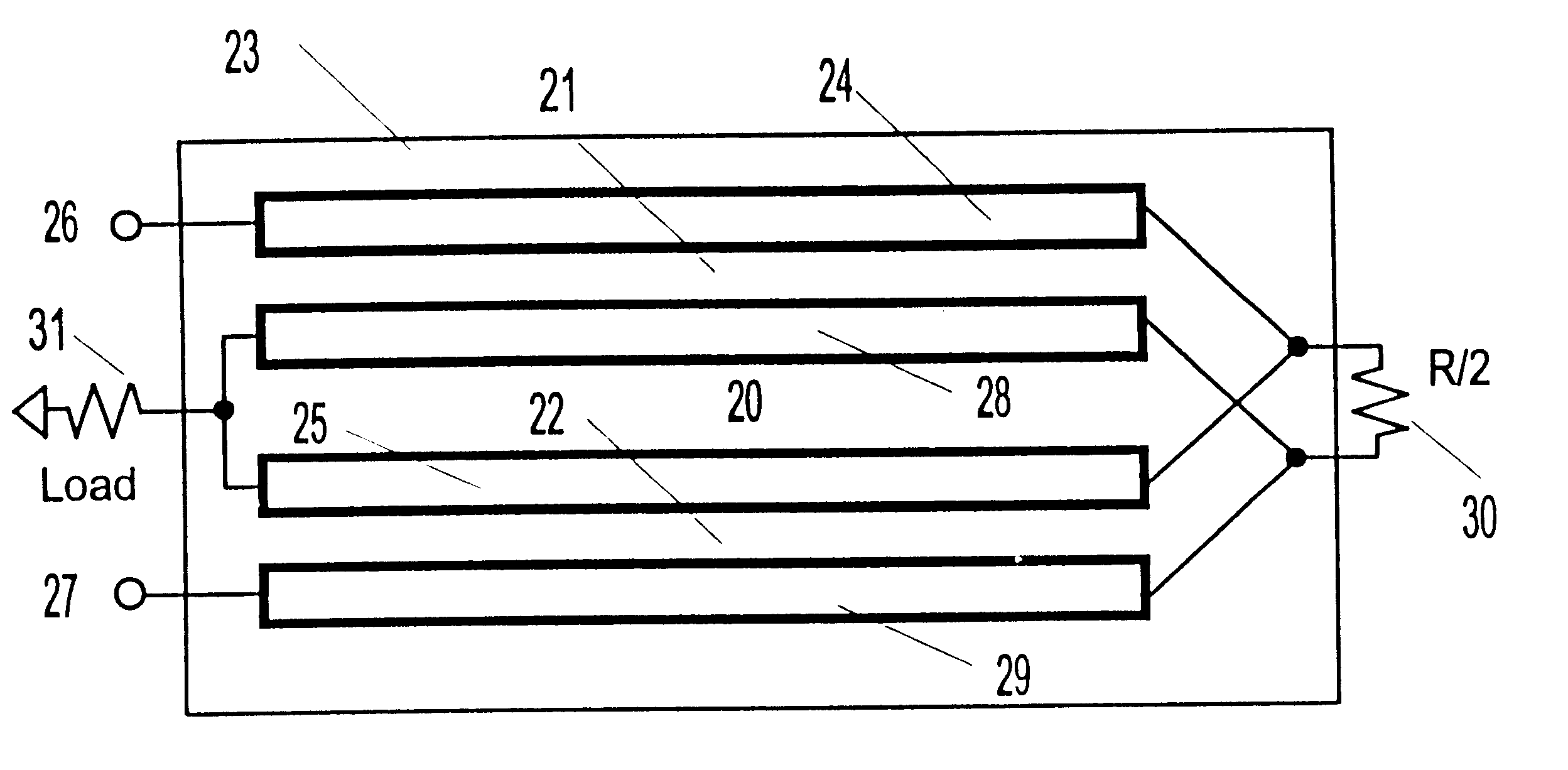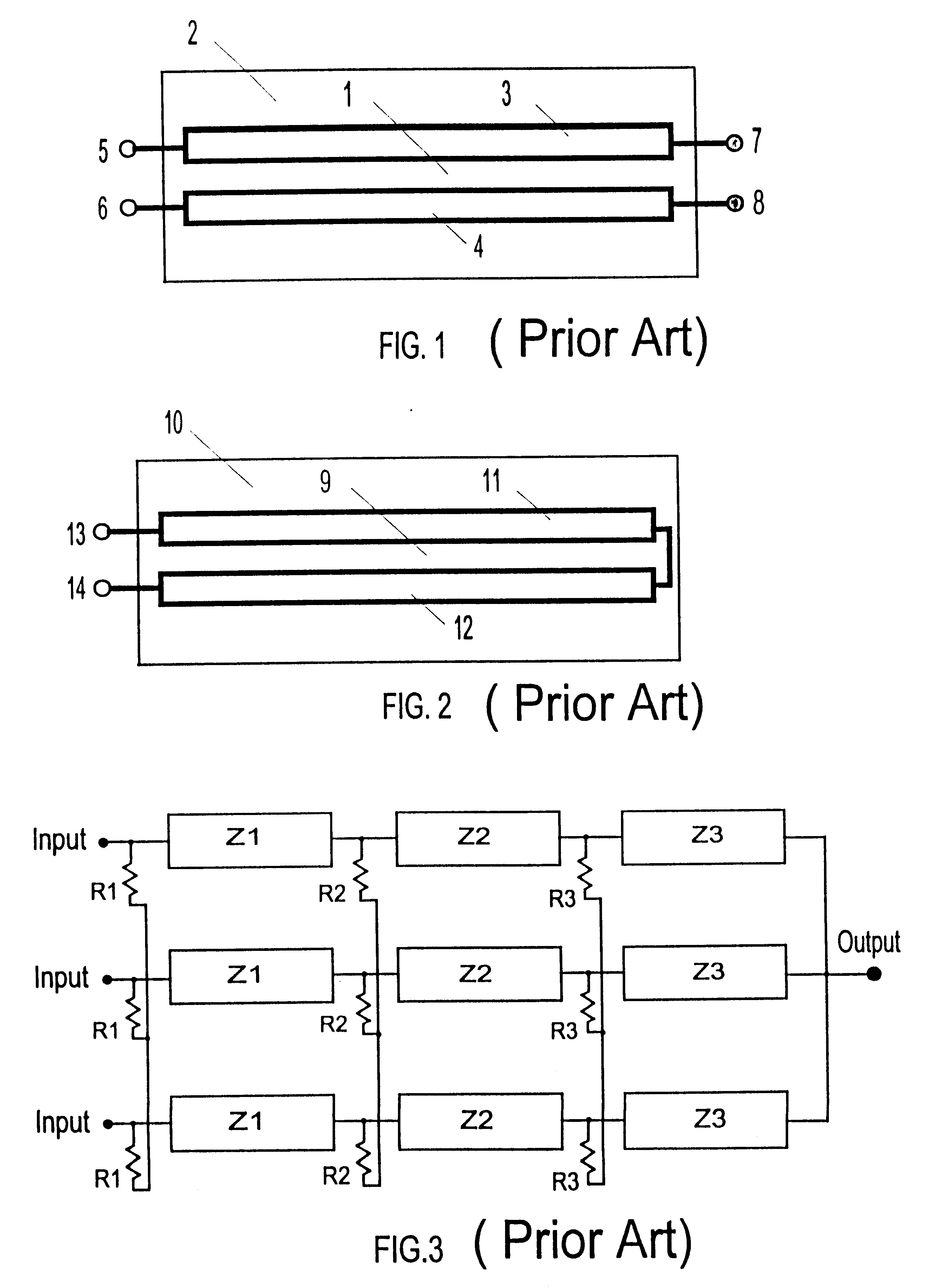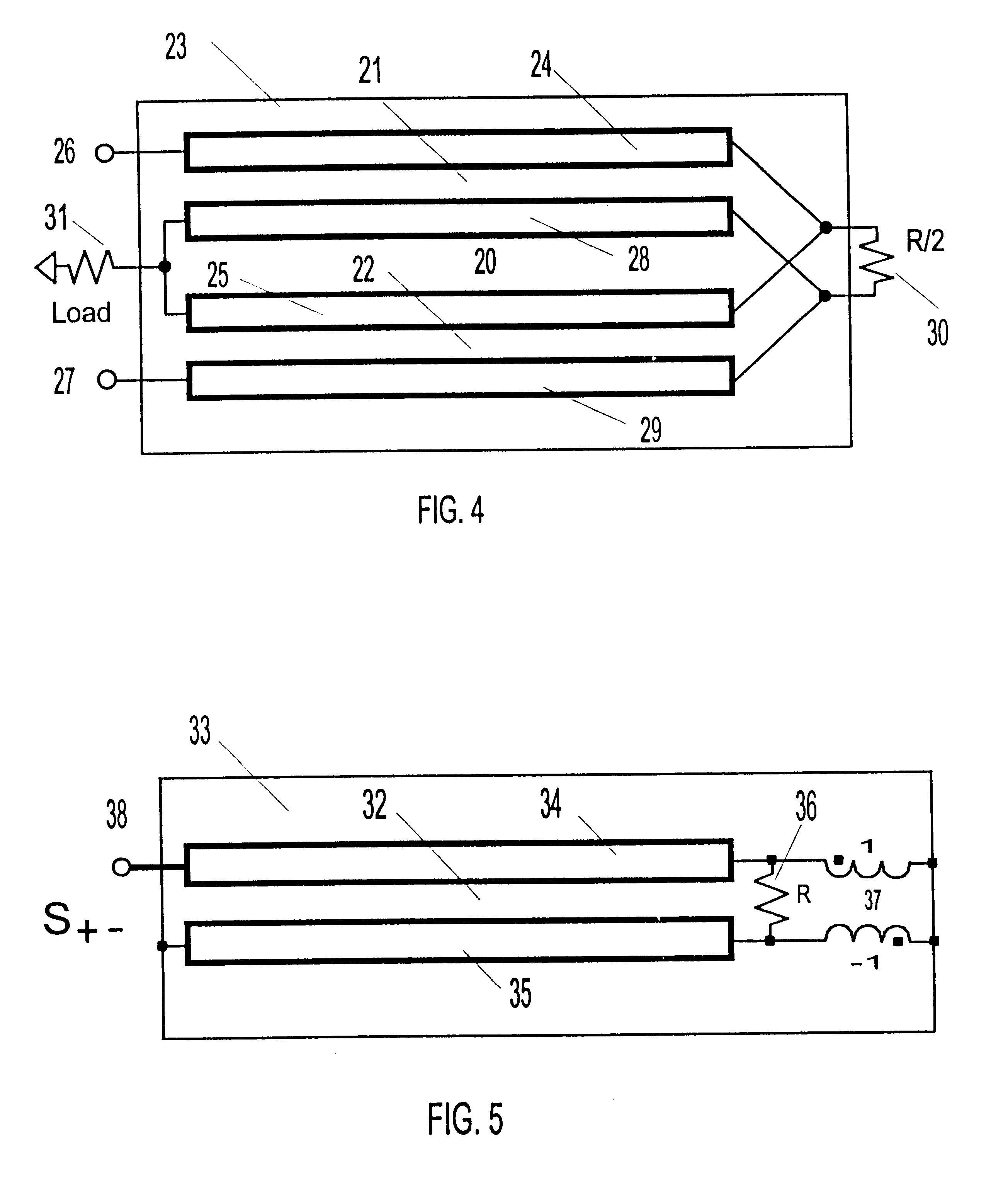Broadband coupled-line power combiner/divider
a power combiner and coupled-line technology, applied in coupling devices, electrical devices, waveguides, etc., can solve the problems of increasing the operating bandwidth of the combiner, increasing the insertion loss and complexity, and the real design becomes very complicated
- Summary
- Abstract
- Description
- Claims
- Application Information
AI Technical Summary
Benefits of technology
Problems solved by technology
Method used
Image
Examples
Embodiment Construction
Referring first to FIG. 1, prior art two-conductor coupled transmission lines is indicated generally by number 1. The first line has one conductor 3 and common ground as a second conductor of this line. The second line has one conductor 4 and a common ground 2 as a second conductor of this line. Both lines have equal length and may have equal or different characteristic impedances. Four unbalanced ports of this structure are 5, 6, 7, and 8. If in a particular case both lines are identical, they form matched directional coupler. At a central frequency of this coupler, the electrical length of each line is equal 90 deg. The nominal impedance, the same at each port 5, 6, 7, 8, and coupling ratio are determinates by coupling coefficient between lines and their characteristic impedance. If coupling coefficient is equal 0.707, a standard 3-dB coupler is provided.
When two adjacent matched ports (5 and 6) or (7 and 8) of coupler FIG. 1 are connected, a matched two-port without impedance tra...
PUM
 Login to View More
Login to View More Abstract
Description
Claims
Application Information
 Login to View More
Login to View More - R&D
- Intellectual Property
- Life Sciences
- Materials
- Tech Scout
- Unparalleled Data Quality
- Higher Quality Content
- 60% Fewer Hallucinations
Browse by: Latest US Patents, China's latest patents, Technical Efficacy Thesaurus, Application Domain, Technology Topic, Popular Technical Reports.
© 2025 PatSnap. All rights reserved.Legal|Privacy policy|Modern Slavery Act Transparency Statement|Sitemap|About US| Contact US: help@patsnap.com



